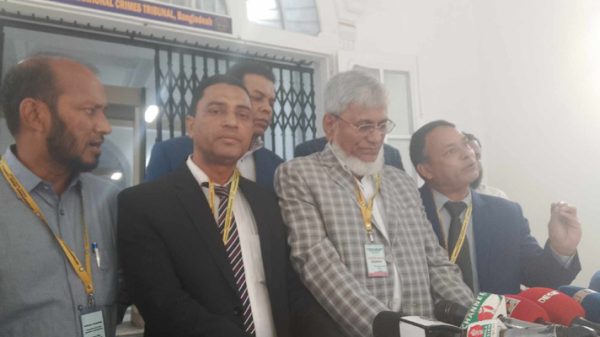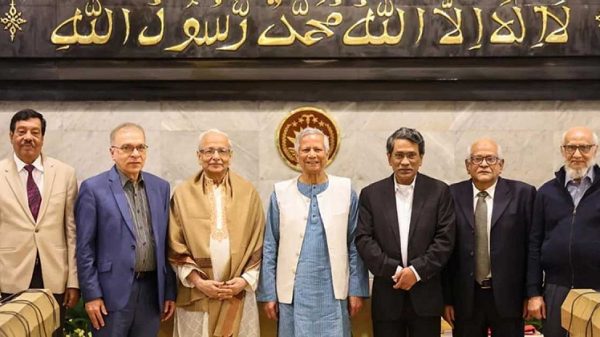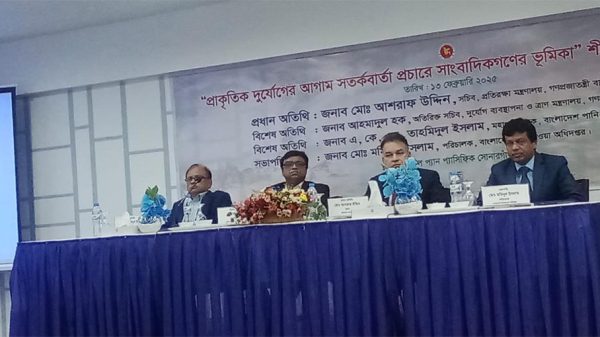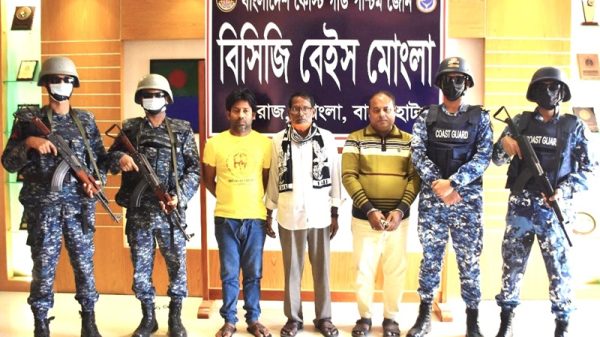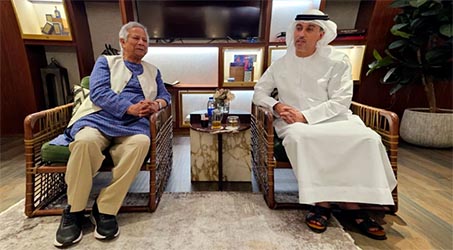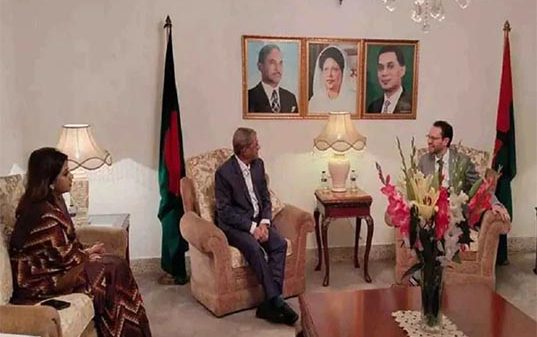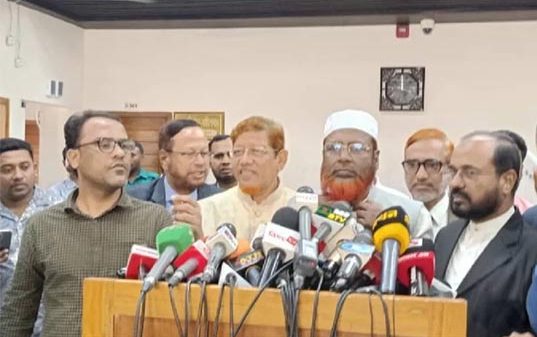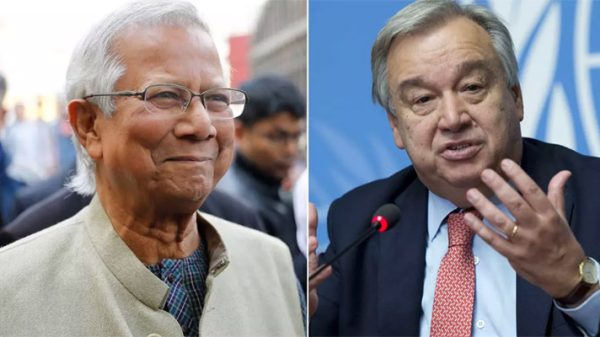Land Ministry working in line with govt’s environment and climate policy: Minister

- Update Time : Saturday, 2 March, 2024, 04:23 pm
- 86 Time View
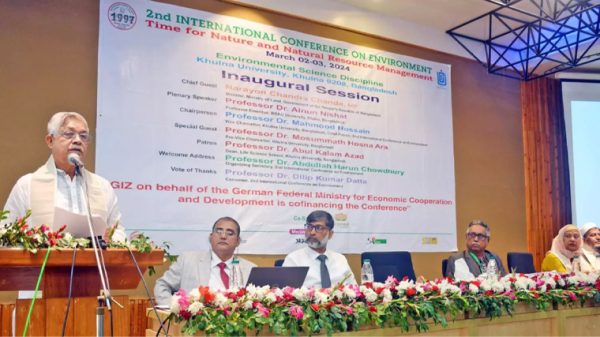
Online Desk :
Land Minister Narayan Chandra Chanda has said his ministry is working in line with the government’s environment and climate policy. These include the Land Zoning Project and the Bangladesh Digital Survey Program. These initiatives will reduce environmental damage in the country by encouraging and enforcing sustainable land use practices, he said. The minister said this while inaugurating the two-day 2nd International Conference on Environment at Journalist Liaquat Ali Auditorium of Acharya Jagadish Chandra Bose Academic Building of Khulna University (KU) on Saturday. The theme of the summit is ‘Time for Nature and Natural Resource Management’. Khulna University Vice-Chancellor Professor Dr. Mahmood Hossain presided over the inaugural function while Professor Emeritus of BRAC University and climate change expert Prof. Dr. Ainun Nishat, Pro-Vice Chancellor of Khulna University Prof. Dr. Mosummath Hosna Ara and Dean of the Life Science School Prof. Dr. Abul Kalam Azad were also present. The Land Minister said that under the land zoning project, they will prepare a digital map and land use plan based on Mouza and Plot division. This includes categorizing land into specific uses such as agricultural, residential, commercial, tourism, and industrial development based on the quality assessment of the land.
The minister said that by using land zoning project data and maps, unplanned urbanization, housing, house construction, development activities, and industrial road construction will be prevented. Environmental protection and production of food crops will be continued by maintaining the class or nature of the land, he added. The land minister also said through this, planned and optimum use of land including protection of agricultural land, forests, hills, rivers, canals, and water bodies will be ensured. He said the land zoning project will prove to be invaluable to ‘Nature and Natural Resource Management’. Earlier, paying tribute to the memory of the Father of the Nation, the Land Minister said, after victory in the Liberation War of Bangladesh in 1971, Bangabandhu Sheikh Mujibur Rahman took various steps to combat pollution and conserve biodiversity in newly independent Bangladesh. The minister said Prime Minister Sheikh Hasina realized that it would not be possible to achieve a Smart, Sonar Bangla — to materialize the dream of Father of the Nation Bangabandhu Sheikh Mujibur Rahman — without taking sustainable measures. She has taken robust policies and plans to protect Bangladesh from the adverse effects of climate change and global warming and create a pollution-free environment in the country.
In 2011, she took the initiative to bring the conservation and development of environment and biodiversity as a constitutional obligation and adopted the long-term delta plan. Plenary Speaker of the conference, Dr. Ainun Nishat said the issue of climate change is now a harsh reality. It is clear that it now rains during Hemanta (dry season), and winter is not as cold as it should be. Besides, salinity in the Khulna region has increased significantly. Dr. Ainun Nishat stressed that food security has now become a major concern for most countries globally due to climate change. He underscored the need for implementing changes in the agricultural management system in Bangladesh. Moreover, he stressed the need to ensure the conservation, restoration, and sustainable use of ecosystems and the benefits derived from them. Thanking the Land Minister and other guests, Vice-Chancellor Prof. Dr. Mahmud Hossain said that diverse natural resources are essential for sustainable ecosystems, which can contribute to health, livelihood, and shelter. He stressed the need for research on nature and natural resource management for food security and poverty alleviation. It is noteworthy that 245 local and foreign experts and scientists from Bangladesh, India, Bhutan, Nepal, the United Arab Emirates, Poland, Italy, and Germany are expected to participate physically and virtually in this conference. A total of 183 research articles, comprising 128 oral presentations, 48 poster presentations, and 6 keynote papers, are scheduled to be presented during the conference. At the conclusion of the conference, it is anticipated that a set of recommendations will be prepared.

